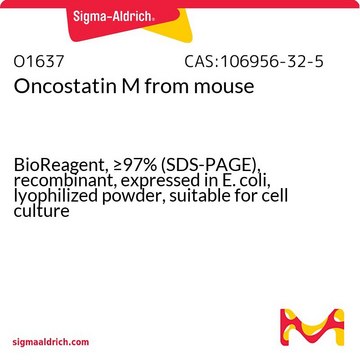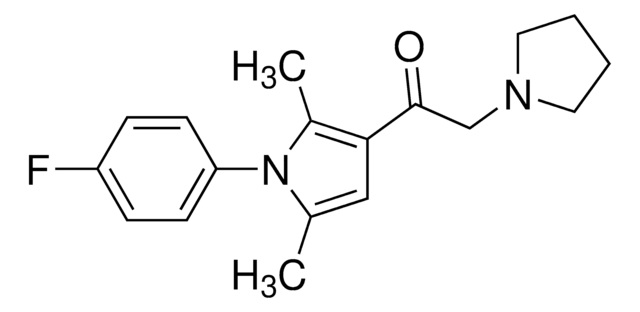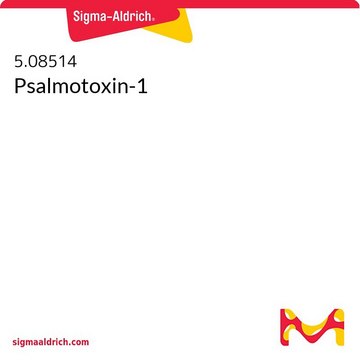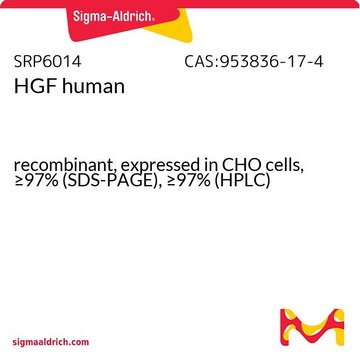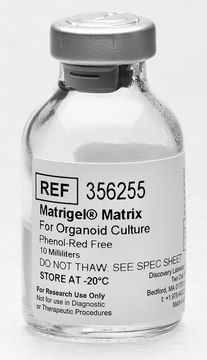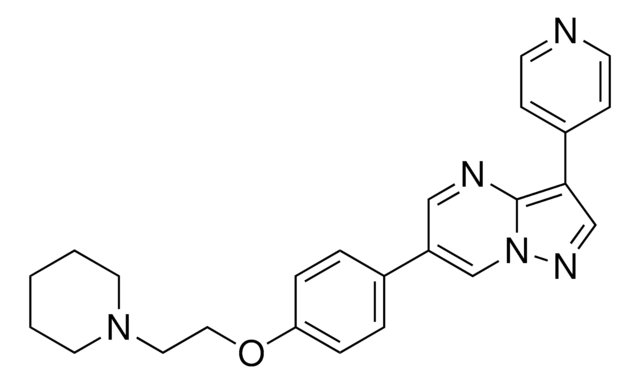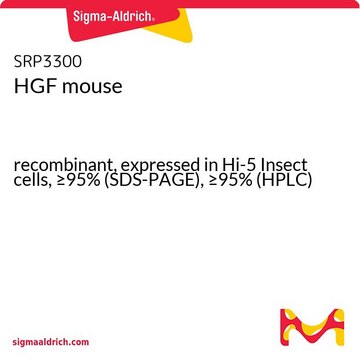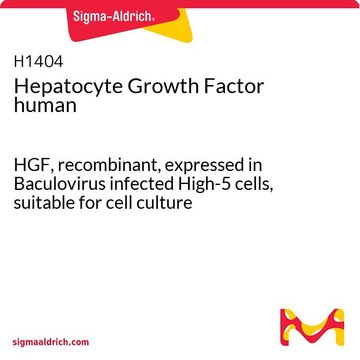SRP3300
HGF mouse
recombinant, expressed in Hi-5 Insect cells, ≥95% (SDS-PAGE), ≥95% (HPLC)
Synonym(s):
Hepatopoietin (HPTA), Scatter Factor (SF)
Select a Size
366,00 $
Select a Size
About This Item
366,00 $
Recommended Products
biological source
mouse
recombinant
expressed in Hi-5 Insect cells
Assay
≥95% (HPLC)
≥95% (SDS-PAGE)
form
lyophilized
potency
10-20 ng/mL
mol wt
80.0 kDa
packaging
pkg of 20 μg
impurities
<0.1 EU/μg endotoxin, tested
color
white to off-white
UniProt accession no.
1 of 4
This Item | H9661 | H1404 | H5791 |
|---|---|---|---|
| recombinant expressed in Hi-5 Insect cells | recombinant expressed in NSO cells | recombinant expressed in Baculovirus infected High-5 cells | recombinant expressed in HEK 293 cells |
| assay ≥95% (HPLC), ≥95% (SDS-PAGE) | assay ≥95% (SDS-PAGE) | assay >95% (SDS-PAGE) | assay ≥95% (SDS-PAGE) |
| biological source mouse | biological source human | biological source human | biological source human |
| form lyophilized | form lyophilized powder | form lyophilized powder | form lyophilized powder |
| storage temp. −20°C | storage temp. −20°C | storage temp. −20°C | storage temp. −20°C |
| packaging pkg of 20 μg | packaging pkg of 5 and 25 μg | packaging pkg of 5x5 μg, pkg of 5 μg | packaging pkg of 5x10 μg, pkg of 10 μg |
General description
Biochem/physiol Actions
Physical form
Reconstitution
Storage Class Code
10 - Combustible liquids
WGK
WGK 3
Flash Point(F)
Not applicable
Flash Point(C)
Not applicable
Choose from one of the most recent versions:
Certificates of Analysis (COA)
Don't see the Right Version?
If you require a particular version, you can look up a specific certificate by the Lot or Batch number.
Already Own This Product?
Find documentation for the products that you have recently purchased in the Document Library.
Our team of scientists has experience in all areas of research including Life Science, Material Science, Chemical Synthesis, Chromatography, Analytical and many others.
Contact Technical Service
